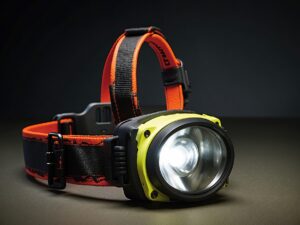As a leading provider of intrinsically safe products, Intrinsically Safe Store is committed to keeping you informed about the latest developments in safety standards. In this article, we delve into the evolution of intrinsically safe headlamp standards, tracing their journey from the past, through the present, and into the future. We invite you to explore our website for a wide range of intrinsically safe products that meet the highest safety standards.
The Past: Intrinsic Safety Standards Take Shape
In response to the demand for safer equipment in hazardous environments such as mines and oil rigs, the concept of intrinsic safety emerged in the early 20th century. Initially, standards for intrinsically safe headlamps were rudimentary, primarily focusing on preventing sparks capable of igniting flammable gases. However, as time progressed, these standards evolved further. They actively incorporated measures to restrict electrical and thermal energy to levels insufficient for ignition. Notably, in the 1970s, Europe took the initiative by introducing the ATEX directive, outlining crucial health and safety requirements for equipment destined for use in potentially explosive atmospheres.
The Present: Robust Intrinsically Safe Headlamp Standards
Modern intrinsically safe headlamp standards are comprehensive and stringent. They actively encompass not only ignition prevention but also considerations such as durability, battery longevity, and luminosity. Key standards include the International Electrotechnical Commission (IEC) 60079 series and the American National Standards Institute (ANSI)/Underwriters Laboratories (UL) 913 standard. These standards mandate rigorous testing to ensure headlamps can operate securely in diverse hazardous conditions. They actively endure extreme temperatures, mechanical impacts, and electromagnetic interference.

The Future: Anticipated Advancements in Intrinsically Safe Headlamp Standards
Looking forward, the evolution of intrinsically safe headlamp standards will likely continue in response to technological progress and shifting industry demands. Potential areas for development include:
- Integration with Smart Technologies: With the increasing prevalence of the Internet of Things (IoT), standards may adapt to actively accommodate smart headlamps capable of seamless communication with other devices. Moreover, this integration will likely enhance overall safety and efficiency in hazardous environments.
- Enhanced User Comfort and Functionality: Furthermore, future standards might actively emphasize greater user comfort and functionality. They may incorporate features like adjustable brightness levels and hands-free operation to improve usability and satisfaction among users.
- Environmental Sustainability: Given heightened awareness of environmental concerns, future standards may also actively include criteria for energy efficiency and recyclability. Consequently, this will contribute to reducing the environmental footprint of intrinsically safe headlamp production and usage.
The Vital Importance of Remaining Informed
The ongoing evolution of intrinsically safe headlamp standards actively emphasizes the critical need to stay updated on the latest safety requirements. As a trusted provider of intrinsically safe products, Intrinsically Safe Store remains actively committed to offering products meeting the highest safety standards. We actively encourage you to reach out to us for more information on our products and how they can assist in actively maintaining a safe and compliant work environment.


























